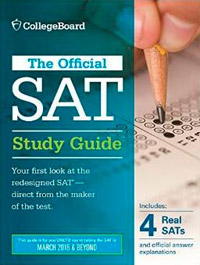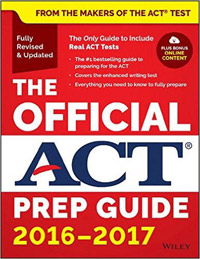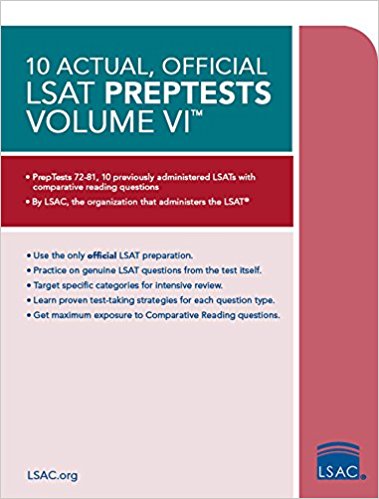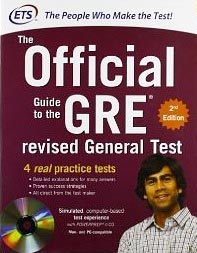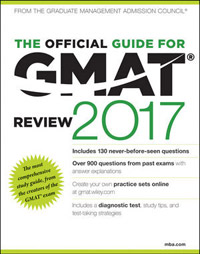|
In a future blog posting, I will explain the details of the SAT scoring system, and why it is important to understand that GUESSING DOES NOT HURT YOUR SCORE.
However, this does not mean that you should try to answer all of the questions on each section. In fact, this will often work against you. NEARLY ALL STUDENTS SHOULD SKIP SOME QUESTIONS ON THE SAT. Why? Well, because although guessing in itself doesn't hurt you, SPENDING TOO MUCH OF YOUR TIME ON THE WRONG TYPES OF PROBLEMS does in fact hurt your score.
Now, on to the specifics. Some of the SAT has PREDICTABLE ORDER OF DIFFICULTY, which means that questions GRADUALLY GET HARDER as you move from the beginning of each section to the end. There are two places on the SAT that have PREDICTABLE ORDER OF DIFFICULTY:
1) Sentence Completions (which come at the beginning of each Critical Reading Section)
and
2) All Math sections.
As for the rest of the test (such as the Critical Reading Passages), there is no way to tell how hard a question is simply by its number. I call this UNPREDICTABLE ORDER OF DIFFICULTY. On these sections, feel free to skip around or save more complicated questions for later (see my patented 6-Step Critical Reading Technique blog entry for more on this, and a list of which types of questions you should skip).
On the Writing Section, I would not recommend skipping any of the questions intentionally because most of them are so short that it's worth at least taking a guess once you've read the sentence. However, you should still take your time, make sure not to rush, and stick to your strengths. For example, on the 25 minute writing section, if you find that you are better at the Error IDs (questions 12-29), go ahead and do those first, THEN go back and try the Sentence Improvements (questions 1-11). You want to take care of the problems you are best at first, and then look at the other ones as extra credit.
Also, you should know that on the math sections that include “Grid-In” problems, the multiple-choice problems and the Grid-Ins have their own separate orders of difficulty. This means that you will encounter a strange area of the test where questions #7 and #8 are hard questions, but #9 is easy because it is the first Grid-In question. SO YOU SHOULDN'T ANSWER ALL THE QUESTIONS IN THE ORDER THEY ARE PRESENTED ON THE 18-QUESTION MATH SECTION THAT INCLUDES GRID-INS. For example, if you normally skip the last 4 questions of the 20-minute section (all multiple choice), then you should answer problems 1-6 and then 8-16 on the Grid-Ins, leaving the 4 hardest problems (7,8,17,18) blank.
This happens on the Critical Reading Section as well. The last Sentence Completion is always very hard, and often the first Critical Reading question is quite easy. It's OK to answer the last Sentence Completion, so long as you don't get STUCK and waste the time that you should be using for Critical Reading. If you are at an impasse, choose an answer and just move on.
If you have your sophomore or junior year PSAT score report available, take a look at the “difficulty column” and you will see exactly what I mean. E stands for easy, M for medium, and H for hard. Did you spend too much time on hard problems when you should have been taking your time on the easier ones? Remember that YOU DON'T HAVE TO ANSWER EVERY QUESTION TO RECEIVE A GOOD SCORE ON THE SAT. IN FACT, EVEN THE HIGHEST-SCORING STUDENTS SKIP A QUESTION HERE AND THERE.
It is also important to remember that every SAT problem is worth the same amount of points. Hard problems might take longer and have a higher degree of difficulty, but that doesn't mean you get any sort of extra credit. An easy problem is worth 1 point, and so is a medium or a hard problem. Thus, it makes sense to get all the easy and medium problems out of the way first, and then worry about the hard problems. In other words, DON'T BE STUBBORN—NEVER GET STUCK ON A HARD PROBLEM WHEN THERE IS AN EASIER PROBLEM TO BE FOUND. Perseverance in the face of difficulty is a great quality to have in life, but this does not help when taking the SAT!
So why is “picking the low hanging fruit” such a good analogy for proper SAT test-taking technique? Well, I want you imagine each section of the SAT as an apple-picking contest, except instead of competing against a crowd, you're standing there all alone at the starting line in a gigantic apple orchard. Your only competition is the clock. When the referee blows the whistle, the clock starts ticking, and you have 25 minutes to pick as many of the apples (answer as many questions correctly) as you can and put them safely in your backpack.
Now, some of these apples are quite EASY to pick, because they are right there at eye level. You don't drop many of them (get them wrong) because you don't need to climb any branches to get to them (most easy problems don't require many steps). The only way you drop one of these is if you are so busy getting to the next apple (rushing or not writing things down) that you make a careless mistake and drop it on the ground (lose 1/4 of a point).
Other apples are at a MEDIUM height — they aren't too far up but they do require some nimble climbing, and the branches are likely to snap if you step on them the wrong way or take the wrong route. (Medium problems can be tricky if you don't pay attention or you don't take the easiest path to the answer!)
Finally, some of the apples are very high up in the trees and are very HARD to pick. If you've already safely picked the rest of the apples and put them in your backpack, go ahead and give these hard ones a shot! But you don't want to be stuck up at the top of the tree only to peer down and notice that you had dropped EASIER to pick apples that are now just sitting there at ground level. Worse yet, these DIFFICULT TO REACH apples are very slippery and easy to drop (did you know that hard problems are actually DESIGNED for you to get them wrong?)
So how do you know how many questions to answer per section? Easy. Take more practice tests, and keep scoring yourself. Every time you take a new test, slow down a little bit more and see how it affects your score. I'm willing to bet that for most of you, your score will start going UP! Of course, you do still have to answer a decent amount of questions to get a good score; so don't go overboard with this. Just remember that you should NEVER TRY TO ANSWER A HARD PROBLEM IF YOU THINK THERE IS AN EASIER PROBLEM TO BE FOUND ELSEWHERE IN THE SECTION. Also, DON'T RUSH—it's better to catch yourself and avoid 2 or 3 careless mistakes on easy/medium problems than it is to bear down and answer one hard problem. Even if you get it right, it will still be a waste of your (very precious) time. TIME IS OF LIMITED QUANTITY ON THE SAT (and in life!), so you need to use it productively.
-Brian
Back to Blog Home
|


